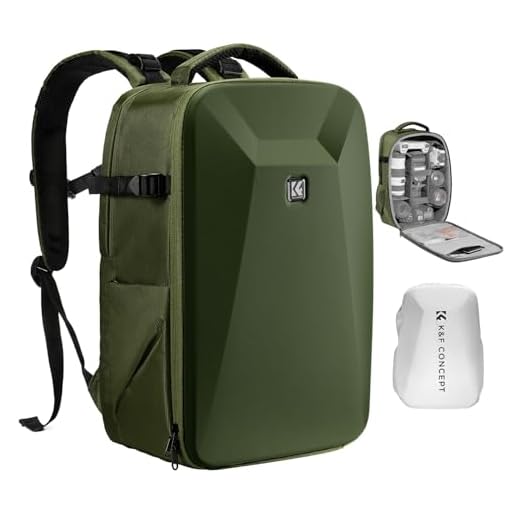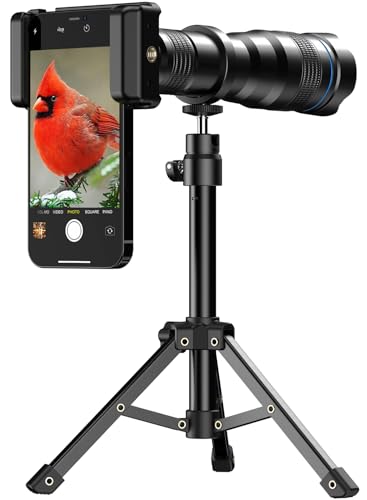



At security checkpoints, it’s advisable to take off any large photography equipment, such as high-end optics. While smaller accessories can often remain in your bag, this larger gear typically must be placed in a separate bin for screening. This policy helps streamline the process and ensures that all items are thoroughly inspected.
When preparing for travel with your photographic tools, consider placing protective wraps around your larger pieces. Not only does this safeguard them during transit, but it can also facilitate a faster security check. Each airport might have slightly different protocols, so familiarize yourself with specific guidelines of your departure location before arrival.
If you’re uncertain about particular items, consult with security personnel before reaching the screening area. They can provide clear instructions on how to handle your specialized gear. Taking these steps will help you pass through the security process smoothly, allowing you to focus on your travels and capturing great moments.
Do Camera Lenses Need to Be Removed at TSA?
I advise you to take out any photographic equipment from your bag during security checks. This includes any detachable optical components. Placing these items in a separate bin helps expedite the screening process and reduces delays.
Upon arrival at the security checkpoint, follow these recommendations:
| Action | Description |
|---|---|
| Inspection | All detachable parts should be placed in a bin distinct from other carry-on belongings for visibility. |
| Additional Screening | Be prepared for possible additional checks. This is routine for sensitive equipment. |
| Protective Cases | Use padded cases to minimize damage risk while handling and transporting. |
Checking the specific regulations of the airline and local security authorities can provide additional clarity tailored to your travel itinerary.
Understanding TSA Rules for Camera Equipment
When traveling, specific guidelines apply to photography gear. It’s crucial to comply with regulations to ensure a smooth airport experience.
General Regulations
- All photography gear should be packed in carry-on baggage whenever possible.
- Items like tripods and lighting equipment may require additional screening.
- A separate bin is generally required for larger pieces of equipment during security checks.
Tips for Smooth Processing
- Label your equipment with your contact information to avoid confusion.
- Arrive early to account for potential delays at security.
- Consider using a backpack designed for photographers to facilitate easy access and organization.
- Stay informed about airport-specific rules, as they can vary.
Checking If Your Camera Lens Qualifies for Removal
Before heading to the security checkpoint, I recommend verifying the specifications of my photographic equipment. If the optical device exceeds a certain size, it may require additional scrutiny. Typically, units larger than a standard compact variety are flagged by security screens.
To assess whether my optical accessory is flagged for separate handling, I examine its dimensions. Most procedures highlight any lens surpassing 3 inches in diameter or length as requiring removal from bags. Checking the manufacturer’s guidelines can provide clarity regarding their classifications.
For maximum clarity during security inspections, I employ dedicated protective cases. These can facilitate quick access and appropriately display equipment during screening. Packing accessories in a way that allows for easy retrieval can enhance the process, minimizing delays and misunderstandings.
Lastly, I stay updated on regional regulations, as they may vary significantly across locations. Consulting official resources can prevent surprises during travel, ensuring a smoother transition through security protocols.
How to Properly Pack Camera Lenses for Security Screening
To ensure smooth passage through security checks, I always opt for padded cases for my optical attachments. A hard-shell case provides additional protection against impacts, safeguarding valuable gear during transport.
I typically store each optic individually, using dividers or padded compartments to prevent movement. This reduces the risk of scratches or damage from friction. If possible, I place the case in a carry-on bag for easy access during security inspections.
Labeling the case as “fragile” offers extra caution, informing security personnel to handle it with care. I pack any other accessories, like filters or hoods, in separate compartments to avoid clutter and facilitate quicker retrieval if required.
Before arrival at the checkpoint, I double-check the contents of my bag. Familiarizing myself with the layout of the security area can help streamline the process. I grab the case when instructed and place it in the bin while ensuring that other items remain neatly organized.
Keeping a personal checklist of items I carry provides peace of mind. If I’m ever uncertain about regulations for specific tools, I reach out to the airline or airport beforehand to avoid surprises. Proper preparation saves time and minimizes stress during travel.
Tips for Fast Processing at Security Checkpoints
Always keep your equipment easily accessible in a separate bag for a smooth transition through security. Utilizing a designated, lightweight case will allow for quick retrieval and packing.
Organize Your Gear
Group similar items together, such as batteries, chargers, and filters, to expedite the screening process. This organization minimizes confusion and allows for a faster review by personnel.
Prepare Documentation
Having any necessary permits or documents ready for inspection can ease interactions with security agents. If you are traveling internationally, ensure that all paperwork is in order to prevent delays.
Arrive at checkpoints prepared for additional screening. Many agents may want to inspect certain gear more thoroughly, so being ready for a more detailed evaluation can facilitate a quicker process.
Common Misunderstandings About Camera Gear and TSA Regulations
Many travelers mistakenly believe that all photographic equipment must be taken out of bags at security checkpoints. This isn’t accurate; only certain items may require separate screening. Understanding specific guidelines can help streamline the process.
Another common misconception is that all types of bags housing photographic gear are treated equally. In reality, large cases usually trigger further inspection, while smaller bags often pass more quickly through scanners. Ensure your gear is packed in a manner that aligns with TSA preferences for speed.
Size and weight restrictions often lead to confusion. Some assume any dimension exceeding a certain limit mandates removal or special scrutiny. However, the rules primarily focus on the type of item; for example, bulky tripods sometimes attract additional attention, while compact gear can remain within bags.
I’ve encountered travelers who fear they will face penalties for any oversight related to their equipment. In most instances, minor infractions do not result in fines. Instead, security personnel generally offer guidance to ensure compliance.
Additionally, the belief that protective cases offer immunity from additional scrutiny can be misleading. While sturdy cases are advisable for safeguarding gear, they don’t exempt personal items from thorough examination by security staff.
Understanding that regulations can vary by airport and even specific time of day is vital. Checking the latest updates directly from the TSA website or using the TSA app for real-time alerts can minimize inconveniences.
It’s also wise to anticipate a mix-up regarding personal gear versus rental equipment. If I carry items belonging to someone else, I make sure to have proper documentation. This prevents unnecessary questions and delays at checkpoints.
What to Expect During Security Inspections for Camera Gear
During security checks for photographic equipment, anticipate a thorough examination of all components. Pack items in a way that they’re easily accessible, as this will streamline the process. Placing sensitive devices in security bins allows for quicker access and minimizes the risk of damage.
Security Screening Procedures
Expect to take all major pieces out of your bag. Larger units often trigger secondary inspections, and having them easily available reduces delays. If you’re traveling with multiple accessories, it’s wise to keep them organized and identifiable, such as in clear pouches.
Communication with Security Personnel
Be prepared to answer questions regarding your items. Clear and concise details about your gear can foster a smoother review process. If anything seems unclear to the personnel, being proactive in explaining your equipment helps address concerns efficiently.
Traveling Internationally with Camera Lenses: Additional Considerations
Be aware of customs regulations in your destination country. Some locations have restrictions on importing electronic equipment, which may include your photographic gear. Check the specific requirements or limitations before departure to avoid potential fines or confiscations.
Consider declaring your gear at customs to streamline the process. Carry a detailed list of all your equipment, including serial numbers, to demonstrate ownership and potentially accelerate inspections.
Insurance is advisable for high-value items. Ensure that your policy covers international travel and protects against loss, theft, or damage. Carry documentation of your coverage and there may be reduced stress during your trip.
Be mindful of voltage compatibility. If traveling internationally, you may require a power adapter or converter for charging batteries. Verify the voltage specifications of each device to prevent electrical mishaps.
Utilize padded, sturdy cases for transport. Protect sensitive equipment from shock and impact during transit. Hard cases are often less likely to draw attention during security evaluations compared to soft bags.
Plan your packing strategically for quicker access. Place your most essential items at the top, making it easier to retrieve them during inspections without rummaging through other belongings.
Stay informed about local regulations surrounding drone usage if your setup includes such devices. Different regions have distinct rules that could affect your ability to use aerial photography tools.
Maintaining an organized travel itinerary can help streamline inspections. Being prepared with all documentation readily available can minimize delays and reduce chances of items being flagged for additional scrutiny.
Advice from Frequent Travelers on Camera Equipment and TSA
Pack gear in a sturdy, padded case to provide protection during transit. This minimizes the risk of damage and also adheres to regulations regarding carry-on items.
Before heading to the security checkpoint, organize your kit. Keep any gear that may require separate screening easily accessible. This can significantly speed up the check-in process.
- Invest in clear zip-lock bags for smaller accessories like filters and batteries to keep everything organized.
- Designate a specific compartment in your bag for these items, ensuring you can quickly retrieve them.
Bring a printed copy of the airline policies regarding equipment, especially if traveling internationally. Different countries might have varying rules that could affect your travel experience.
Consider arriving at the airport well in advance, especially if you’re carrying a lot of equipment. This allows sufficient time for any unexpected delays at security.
Don’t hesitate to ask security personnel for guidance if uncertain about any aspect of the screening process. They’re there to assist and often appreciate travelers who seek clarification.
- Check baggage limits for your airline. Some may have restrictions on size and weight for carry-ons, especially for larger gear.
- Use cable ties or strap organizers to prevent cords from tangling, making inspection easier.
- Familiarize yourself with the local rules of your destination. This can help avoid issues at foreign checkpoints.
Lastly, be patient. Security checks are routine, and smooth cooperation usually speeds up the process for everyone involved.
Resources for Current TSA Guidelines Regarding Photography Gear
For the most accurate and updated information, I always refer directly to the Transportation Security Administration’s official website. They provide detailed guidelines on what is permissible for my photography equipment during security checks.
Useful Online Platforms
Websites like the TSA’s official Twitter account and popular travel forums are invaluable for real-time updates. Following relevant hashtags can also lead to tips from fellow travelers regarding their experiences with security protocols related to photography gear.
Mobile Applications
Downloading mobile apps tailored for travelers can streamline my experience. Some applications include real-time alerts about airport procedures and security updates, which keep me informed while on the go.
For additional support, I recommend connecting with photography communities online. These forums often share specific insights regarding equipment requirements at different airports, making my travel planning even smoother.









